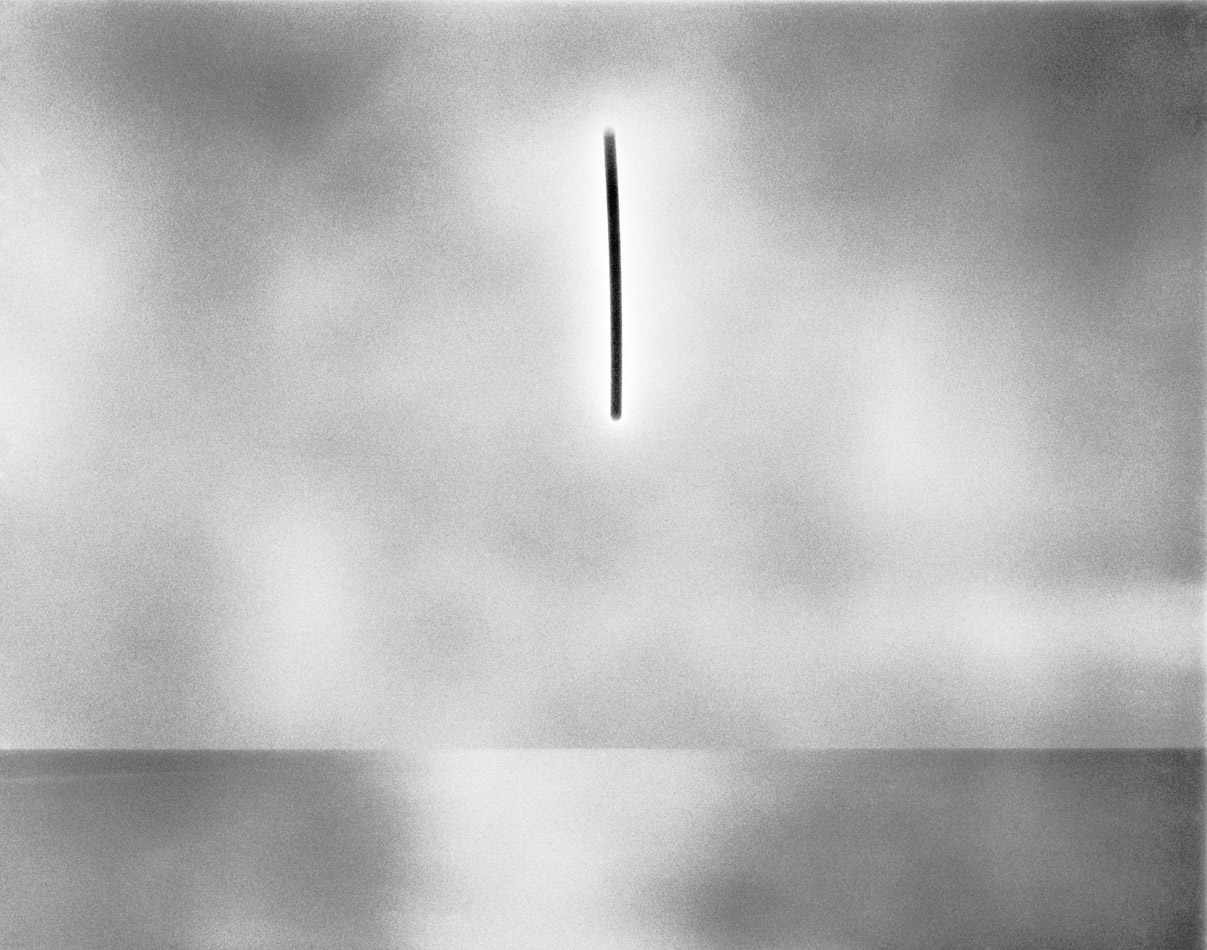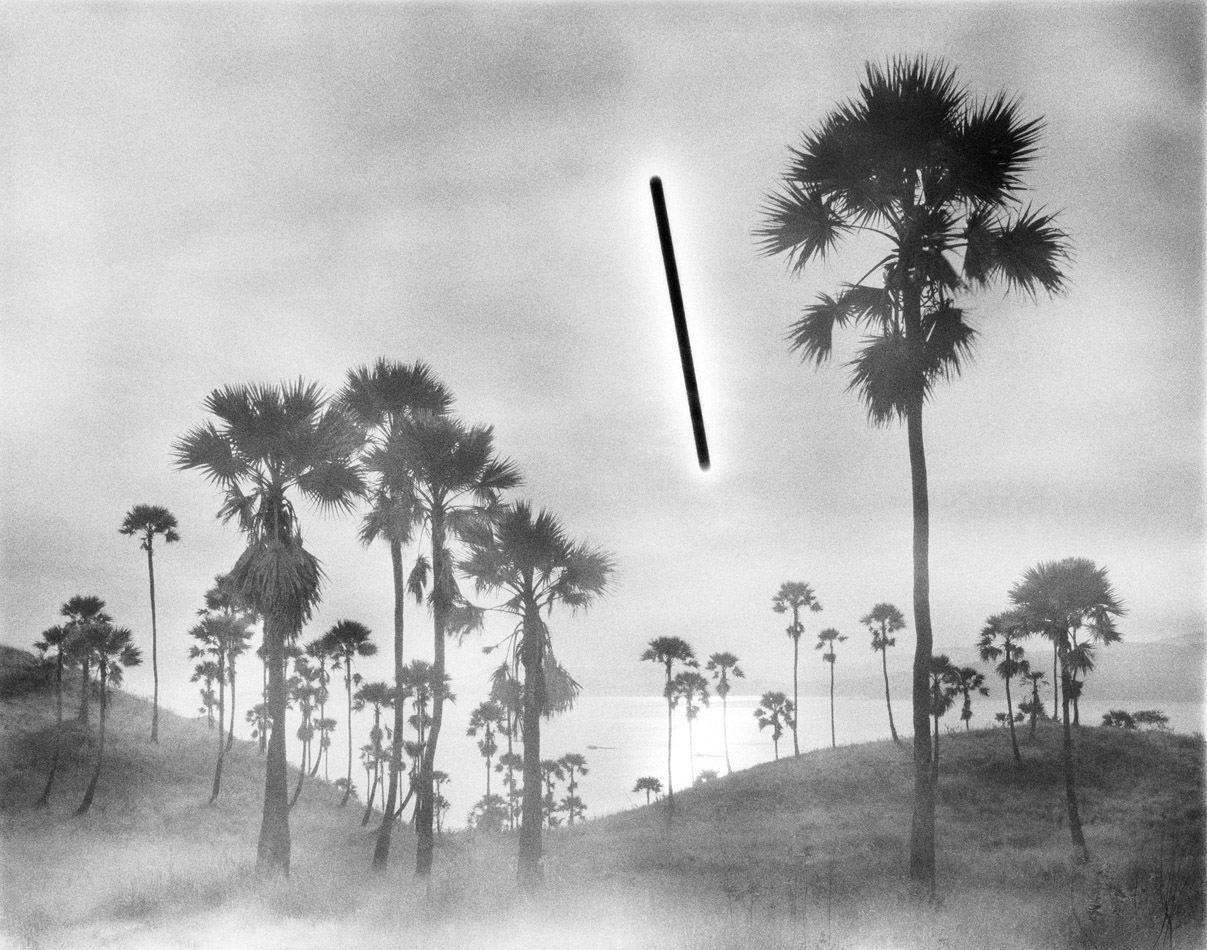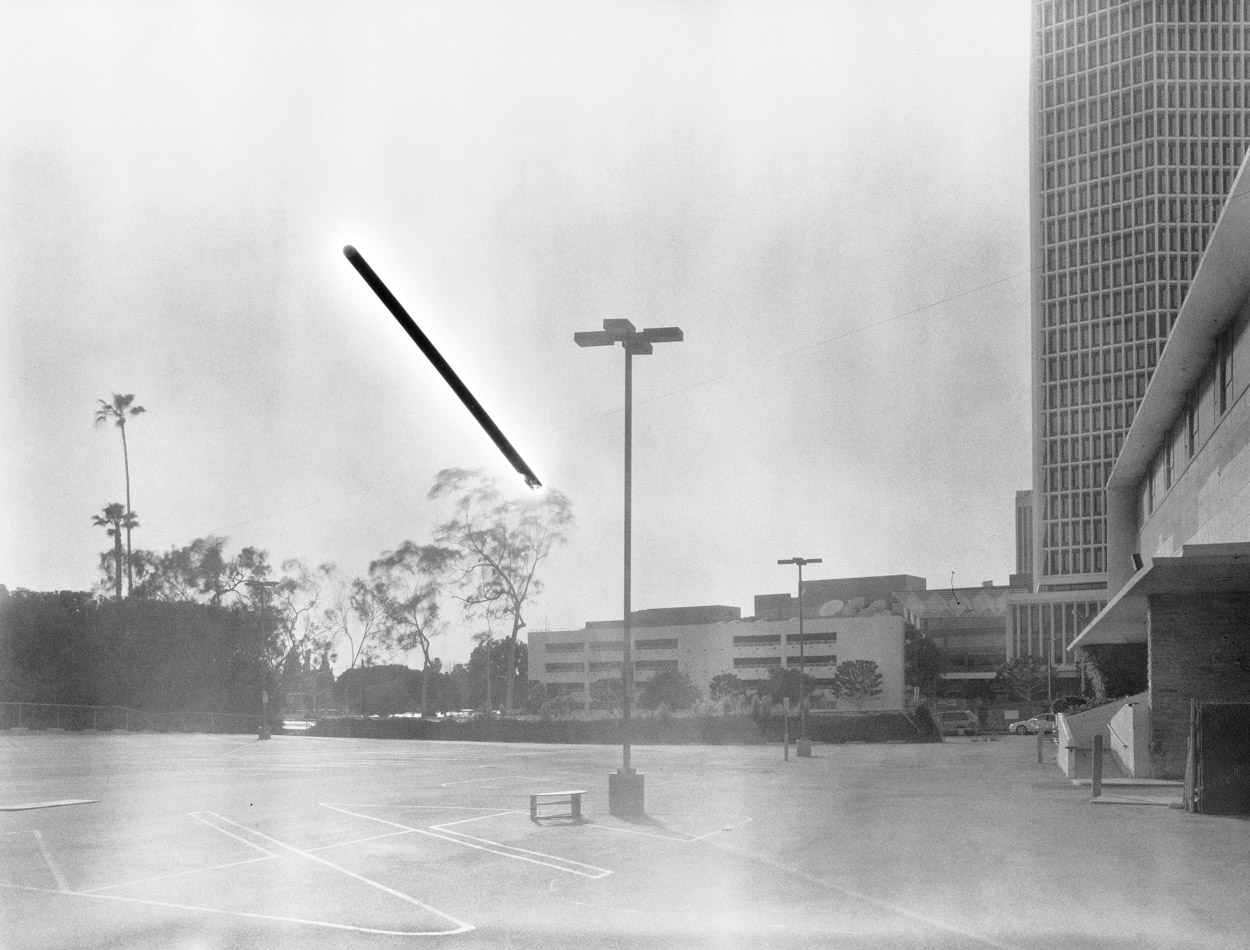 Hans-Christian Schink's latest series 1h is a real departure from the formal precision of much of his previous work and a delightful return to the essence of photography. The series has just been released in book form by Hatje Cantz (this one cannot have been easy to print!). Some of the works from 1h are currently on show at the Kicken Gallery in Berlin until 16 April. This interview was done for the latest issue (#6) of the excellent Fantom magazine based in Milan and New York.
Hans-Christian Schink's latest series 1h is a real departure from the formal precision of much of his previous work and a delightful return to the essence of photography. The series has just been released in book form by Hatje Cantz (this one cannot have been easy to print!). Some of the works from 1h are currently on show at the Kicken Gallery in Berlin until 16 April. This interview was done for the latest issue (#6) of the excellent Fantom magazine based in Milan and New York.
Marc Feustel: I'd like to start by asking you how the idea for this project first came about? It seems to be a significant departure from your previous work in terms of your visual approach.
Hans-Christian Schink: I first used solarization in one of my works in 1999 when I was invited to submit a work to the Department of Physics and Astronomy at the University of Jena. I submitted a piece made up of three panels with abstract color gradations of a sky during the day, a sky at night, and the path of the sun, which appears as a solarized, black line on a white background. I got the idea from a Hermann Krone photograph from 1888. Unlike Krone, I pointed my camera straight at the sky in order to get a clean, linear image of the sun. I didn't pursue this theme at the time as I was focusing entirely on my series Verkehrsprojekte Deutsche Einheit (Traffic Projects German Unity). Later, on a trip to the Mojave Desert in California in 2003, I was so fascinated by the landscape and the blazing light that I wanted to find a way of reproducing this almost unreal impression. I remembered Minor White’s photo, Black Sun, of a winter landscape where the sun appears as a solarized black dot—an accidental effect created when the camera shutter briefly froze. I wanted to try to use this effect with a longer exposure, but I wasn’t sure if any of the landscape would be recognizable at all. I didn't work persistently on the idea at the time: I was busy with other projects and wasn't sure that it was possible to construct a solid concept from what was quite an atypical approach for me. I was also still dealing with different technical and contextual issues. Most importantly, though, I wasn't sure that the project could become something more than a technical game.
MF: What was it that convinced you could turn the project into something more than a technical exercise?
H-CS: It was a question of the atmospheric power of the image. To me, the Hermann Krone picture was the document of an experiment: it only contains the line of the sun and a faded rooftop silhouette. My first test photos didn't look very different. But when I found a way to balance out the aesthetic power of the landscape with the dominating phenomenon of this mystical black line, I knew it would work.
MF: The project seems to deal with the very essence of photography: drawing with light. These sun traces seem like the most primitive manifestation possible of this. Was this project a way for you to explore the basic components of photography, light and time?
H-CS: Yes, absolutely. And in a very unusual, almost abstract way. I was able to reproduce the light of the sun and the passage of time without them being recognizable as such at first glance. The pictures show a completely different reality of their own that can only be perceived through photography. This touches on one of the key issues of the medium: the ability to depict reality.
MF: The relationship to reality is a very interesting component of these photographs. Although the landscapes are real, the black trace of the sun makes us question the reality of these images. In general, it seems that photography's link to reality has become more and more hazy with technological developments in recent years. Do you think that people would still be as attached to photography if it were no longer perceived as a document of reality?
H-CS: I don't think of photographs as documents of reality. Even if they are taken from reality, to me photographs are beyond reality, in either a positive or negative sense. Looking at hundreds of holiday snapshots taken with enthusiasm during a trip to an exotic location, you will most likely realize that these images do not translate the atmosphere of that place at all. Your own experience of reality is far from what's depicted in a photograph. On the other hand, in a photograph as a work of art you will always find more than you can actually see in the picture. It will create it's own kind of reality.
Of course, the presumed link to reality is still one of the most important aspects in photography. Even if we know that a "photographic" image is completely digitally composed, it somehow appears to be a document of reality. It's a matter of perception versus knowledge and I don't think this tension is going to weaken.
MF: I’m interested in the very particular aesthetic of the images. The long exposures give the pictures a very particular feel, like faded nineteenth century travel photographs where the chemistry has changed over time. Did you have something specific in mind when you started or was this just the result of the complicated long exposure process?
H-CS: It was a result of the process. I just needed to understand that this particular aesthetic is essential to the work. I realized that the technical imperfection was a benefit, not a drawback, that it gives a certain 'back-to-basics' impression. The whole project was about accepting conditions that were completely different from my previous projects.
MF: The black trace of the sun has a great democratising power. All of the landscapes, no matter how dramatic, beautiful or iconic appear to be dwarfed by this primitive trace or scar in the sky. The chemical inversion of sunlight from white to black also seems to reverse the properties of the sun. It is no longer life-giving, warm or nourishing, but rather becomes brutal, stark, and even creates a sense of melancholy.
H-CS: I agree and I'm quite happy that the results turned out that way because that was what I was hoping for. Though, one of the many ambiguous aspects of this project is that the atmosphere of the image is so different from the one when taking the picture. The hours I spent waiting next to the camera, often just observing the landscape while the sun did its job, were fascinatingly intense, sometimes unforgettable experiences… among the best experiences I’ve had in my work up to now.
MF: How did you decide on the 1h timeframe for the exposures?
H-CS: I started with timeframes of 10, 20 and 30 minutes, always curious as to the effect this extreme overexposure would have on the visibility of the landscape in the picture. I was surprised by the results and so I finally settled on an exposure time of one hour, since it’s the most commonly used unit of time. Dividing time is the human way to deal with eternity.
MF: I’m interested in the disconnect between these photographs and your experience when capturing these images. Of course you cannot look directly at the sun, let alone watch it inscribe its path in the sky over one hour. Can you describe your experience observing these landscapes while waiting for your camera to capture the trace of the sun?
H-CS: At the early stage of the project I always felt a little nervous during the one hour of exposure time, concerned about the result. Over time I learned to accept that once the cameras are set, the result would be beyond my power anyway. Given this, I became much more relaxed. I developed a kind of laid-back stoicism and was able to enjoy the situation, to enjoy the sunlight, which was of course warm and nourishing then. Even at locations in L.A. or Tokyo for me there was this atmosphere of calm and quietness. And in some particular places like in the Algerian or Namibian desert this experience became really amazing. There were moments of contemplation when I started to sympathize with the idea of worshipping the sun.
MF: When you began the project in the Mojave desert I believe that you initially intended to shoot it in a single location. What made you decide to extend the project across the globe?
H-CS: One of the most fascinating aspects of the experimental phase before I actually started the project was exploring how the angles of the sun line varied according to the latitude of each location. As a result of this variation, I decided to expand the project to cover the whole world and therefore began checking to see if the destinations I had already selected would be suitable locations for this series. At the same time I also started looking for places that fulfilled certain criteria, for example I wanted a photo from the northernmost and southernmost points that could be reached with a reasonable amount of effort. I also wanted a picture of the midnight sun, photos from places along the Tropic of Cancer and Tropic of Capricorn taken during the solstice, a picture shot from as close to the equator as I could get, and one taken along the International Date Line.
MF: The sun is a universal symbol which has deep cultural and religious connotations that differ around the world. Was this something that you considered in choosing the different locations?
H-CS: Yes, in the beginning. Actually I was thinking of going to Egypt for example, but then it would have been almost impossible to avoid photographing at locations related to the sun as a religious symbol. The next question would have been why choosing only one specific location since there are so many other sun-related places all over the world. The focus would have turned too much to human culture and religion.
MF: You chose to focus not only on natural landscapes but also on some urban locations. What made you decide to include these cityscapes alongside the more dramatic natural landscapes in the series?
H-CS: It was important for me to show that this phenomenon occurs everywhere, not only in landscapes far from civilization. The power of the sun is present all over the globe. However, it was extremely difficult to find urban settings with no visible "life", with no or few people, no cars going by in front of the camera causing reflections that would have distracted the viewer's eyes from the line of the sun. In the beginning I also photographed in places that were easily recognisable, such as Downtown L.A. or the Reichstag in Berlin, but finally decided not to use them, for the same reason.
MF: You have referred to the connection of this project to nineteenth century travel photography. Today it seems that the sense of discovery in travel has all but disappeared, there are virtually no places left to discover. I was struck by the fact that your series revives the sense of discovery by showing us the world in a way that cannot be seen by the naked eye.
H-CS: It's a different kind of discovery. I like the idea that this discovery can take place everywhere, you don't even have to travel to experience it. But I did, and it was my goal to show the world in a way that cannot be seen by human eyes.
MF: In the book, you include a map detailing the itinerary that you took to shoot the series. I was interested in the fragmented nature of this journey: it is not a round the world trip but a series of individual trips which extend out over time from your home in Germany. How important was the journey process for you in making this series?
H-CS: The final journey I made to complete the project was actually a three-month around-the-world trip. After all the single trips undertaken to get to a particular destination I thought it would made sense for the final journey to literally follow the sun on its way around the earth. Knowing the facts of modern astronomy, I think this geocentric perspective is still the way we look at this phenomenon up in the sky.
MF: The captions to your images provide details of the date, exposure time and coordinates where the image was taken. This information is at once very specific, scientific even, and yet it reveals nothing to us about the subject or location of the photographs. Why did you decide to use this information for the captions and to omit the names of the places where you were taking these photographs?
H-CS: Since the photos are not about the individual locations per se, I decided not to mention the places in the title, because they would always evoke some sort of visual association. I also like the contradiction between the fact that the title of each work gives the most precise information possible about the location but nobody knows where it is. We still rely on names to imagine a place, even if our imaginations don't reflect the reality of that place. I also enjoy the contradiction between the fact that the images seem to show something completely beyond human control, something out of this world, but if you check the coordinates with Google Earth, within a few seconds you're looking down from above like a god on the exact place where the picture was taken.



